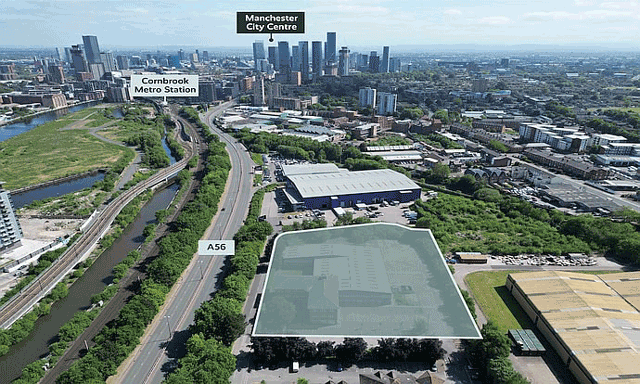Gyms, rather like eating out, have become an essential part of 21st-century life. Eating out used to be viewed as a luxury, while the gym was a specialist choice: both are now routine activities. In some cases it is one followed by the other, a workout followed by a meal, effort followed by reward.
Colin White, partner at Edward Symmons, points out that the rise of the gym has continued despite the economic downturn. Latest statistics from the Leisure Database suggest a 4.5% rise in total gym membership and a 1.5% rise in value in the year to the end of March 2013.
But although people may be continuing to pay out for gym fees despite hard times, this does not mean the market is pressure free. Symmons adds that these figures conceal “significant structural changes in progress and set to transform the sector dramatically, the most notable being the rapid rise of low-cost gyms”.
Just as you can compare exercise and eating out, so you can compare gyms with hotels and shops. The rise of the budget gym is analogous to the rise of the budget hotel and the budget shop and is one reason that the “squeezed middle” is a phrase you hear rather a lot nowadays. It is applied to all these sectors to indicate that while the budget and luxury markets are doing well, the market sector between them is more challenged. It is as if people have decided that whatever they are buying they either want something cheap or something special, but that they are not interested in anything else.
White says that this is very trying for the mid-market. He says: “The mid-market groans every time a low-cost gym opens close to an established budget or mid-market gym. The impact is significant with a loss of membership which sparks a price war.”
None of which is good news, adds White, for the likes of LA Fitness, Bannatyne Health & Fitness, Fitness First and Total Fitness, among others.
Thomas Rose, head of leisure and restaurants at Cushman & Wakefield, says this pressure on the mid-price, mid-service health club is a key reason why capital investors have favoured the budget gym sector lately. In 2013 we have already seen the sale of Pure Gym to CCMP Capital (see panel) and the Gym Group to Phoenix Equity Partners for £100m.
Cushman has been retained to act for the Gym Group and Rose says that its success – it now has nearly 40 sites – is typical of the segmentation of the sector into low- and high-cost gyms. Typically, the measure of the gyms within the sector is in monthly membership fees, with low cost often defined as around £20 a month, mid-range as £30-£45 and high cost £45 and upwards. Some, such as Equinox in London’s Kensington – also represented by Rose – are considerably more: it has a joining fee of £250 and monthly charges of £180. And if you think that this sounds a bit steep, consider Equinox’s elite E at Equinox in New York, which will cost you $23,500 a year and require a retinal scan to let you or any of the other 200 members in.
So, there is great variation, but typically the more expensive urban gyms will have a swimming pool, while their budget cousins will not, and the more upmarket out-of-town gyms will often have tennis and squash courts as well.
Alex Hill, associate at Colliers, thinks that these racquet sports centres are another sector within a sector that could do well: “The premium racquet clubs, on the whole, will continue to trade reasonably where operators are not burdened by debt.”
The fact that gyms have become so important in modern life is one reason why the leisure agents are finding that retail landlords are getting keener to attract gyms to shopping areas.
This simultaneously drives footfall and might help to take up old retail stock which is proving difficult to let as a shop.
Rose says: “Retail park landlords like them [gyms] because they have started to realise that they attract people and you can put gyms into old Comets or Woolworths quite easily.”
Rob Wingrave, managing director at Lunson Mitchenall, which represents LA Fitness, agrees that one of the key characteristics of the gym market is that it is segmenting between high-end and budget. He adds: “My view is that we are going to see a fair bit of consolidation over the next year.”
There is certainly going to be some scrapping for business. LA Fitness, which runs 80 gyms across the country, is fighting hard to control its pre-tax losses. June figures show a downturn of 37.2% to £17m over the year to 31 October 2012, partly thanks to cost cutting and lower debt repayment charges.
The improvement seems to be continuing in 2013, with membership rising to 191,000 from 188,000 over the three months to 31 January.
The chain is also planning to open a new flagship in St Botolph’s in London. The mid-market may be under pressure, but clearly it hasn’t stopped competing quite yet.
Gym membership is up – despite the continuing downturn. But the booming ?low-cost operations, with the support of capital investors, are pressurising the sector’s mid-market.
Pure Gym: Bingo halls and shopping centres are key to expansion
One of the health clubs that is giving itself a thorough business workout in 2013 is Pure Gym, which was bought by CCMP Capital in June for a figure understood to be £150m. The deal keeps current management in place and will inject £50m to expand the chain, which currently has 50 gyms across the UK.
Pure Gym describes itself as a low-cost gym, offering membership for £26 a month in London and £19 outside, placing it firmly in the budget market. Chief executive Peter Roberts says that the economics of its operation makes London rent levels “reasonably difficult”, although the chain already has 20 gyms in the capital. It expects to pay rents of £6-£8 per sq ft in the provinces and £8-£12 in London, although Roberts realises it will need to go higher to get a site in the City where it would like to be.
Pure Gym is also targeting unusual buildings for gyms, as it tries to be flexible in finding new sites. It is open 24 hours a day and tends to favour large buildings, with few below 15,000 sq ft and the biggest, in Glasgow, at 28,000 sq ft. Its gyms cost £1m to fit out on average and the company often negotiates a contribution from the landlord. The largest so far has been £200,000. Leases are generally signed for 15-20 years.
The type of sites Roberts is looking to expand into include secondary retail parks, old car showrooms, bingo halls and shopping centres. However, he admits that there is sometimes an issue with rents when a former retail site changes use: “The problem is that landlords are used to retail rents and we don’t pay retail rents.”
In the end, lower rent is better than no rent, so some secondary retail is likely to turn into gym space. That will make up part of Pure Gym’s planned expansion of 35-40 gyms a year both in the UK and, in future, overseas. Target markets include Europe, the Middle East and the Far East.











